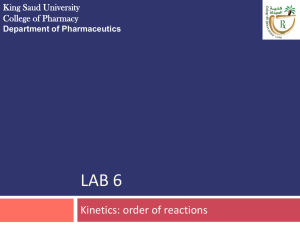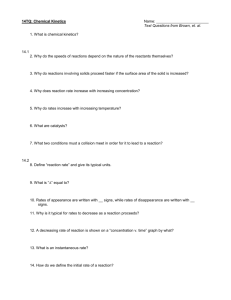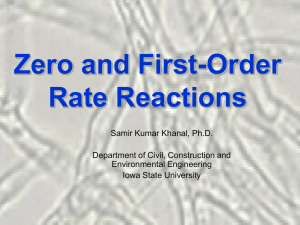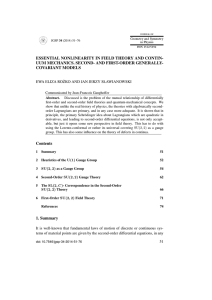STABILITY SYSTEM ScienTek Software, Inc.
advertisement
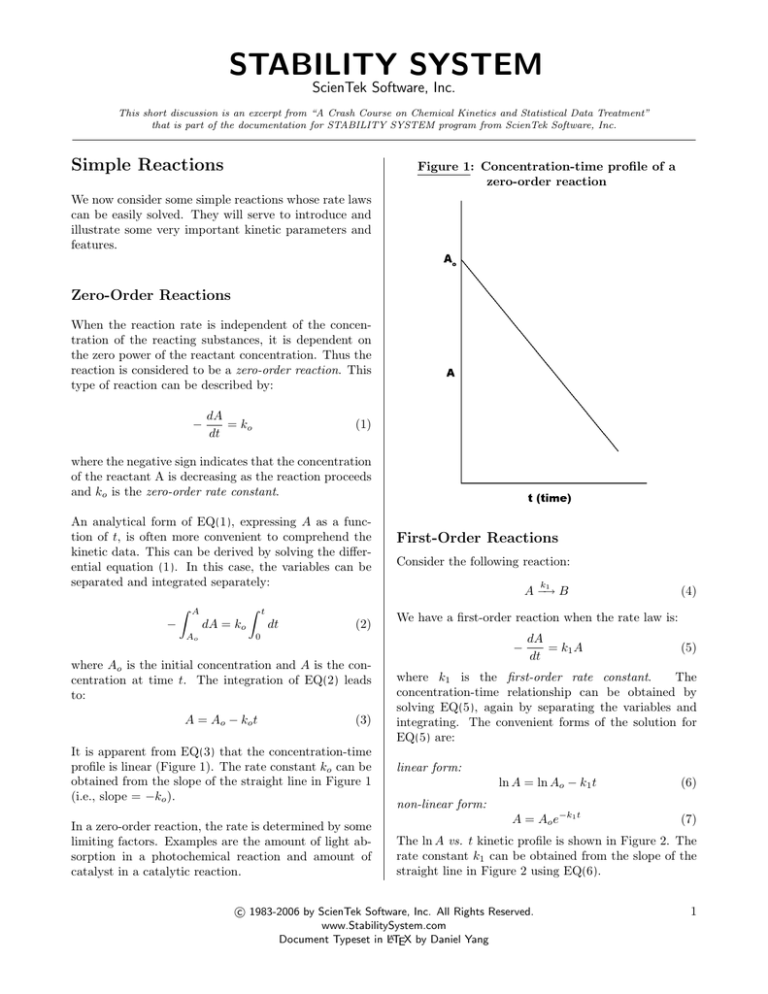
STABILITY SYSTEM ScienTek Software, Inc. This short discussion is an excerpt from “A Crash Course on Chemical Kinetics and Statistical Data Treatment” that is part of the documentation for STABILITY SYSTEM program from ScienTek Software, Inc. Simple Reactions Figure 1: Concentration-time profile of a zero-order reaction We now consider some simple reactions whose rate laws can be easily solved. They will serve to introduce and illustrate some very important kinetic parameters and features. Zero-Order Reactions When the reaction rate is independent of the concentration of the reacting substances, it is dependent on the zero power of the reactant concentration. Thus the reaction is considered to be a zero-order reaction. This type of reaction can be described by: − dA = ko dt (1) where the negative sign indicates that the concentration of the reactant A is decreasing as the reaction proceeds and ko is the zero-order rate constant. An analytical form of EQ(1), expressing A as a function of t, is often more convenient to comprehend the kinetic data. This can be derived by solving the differential equation (1). In this case, the variables can be separated and integrated separately: Z A − Z dA = ko Ao t dt (2) First-Order Reactions Consider the following reaction: k 1 A −→ B We have a first-order reaction when the rate law is: 0 − where Ao is the initial concentration and A is the concentration at time t. The integration of EQ(2) leads to: A = Ao − k o t (3) It is apparent from EQ(3) that the concentration-time profile is linear (Figure 1). The rate constant ko can be obtained from the slope of the straight line in Figure 1 (i.e., slope = −ko ). In a zero-order reaction, the rate is determined by some limiting factors. Examples are the amount of light absorption in a photochemical reaction and amount of catalyst in a catalytic reaction. (4) dA = k1 A dt (5) where k1 is the first-order rate constant. The concentration-time relationship can be obtained by solving EQ(5), again by separating the variables and integrating. The convenient forms of the solution for EQ(5) are: linear form: ln A = ln Ao − k1 t (6) A = Ao e−k1 t (7) non-linear form: The ln A vs. t kinetic profile is shown in Figure 2. The rate constant k1 can be obtained from the slope of the straight line in Figure 2 using EQ(6). c 1983-2006 by ScienTek Software, Inc. All Rights Reserved. www.StabilitySystem.com Document Typeset in LATEX by Daniel Yang 1 Figure 2: Linear concentration-time profiles of a first-order reaction solving EQ(9), again by separating the variables and integrating. A convenient form of the solution for EQ(9) is: 1 1 = + k2 t (10) A Ao The A1 vs. t kinetic profile is shown in Figure 3. The rate constant k2 can be obtained from the slope of the straight line in Figure 3 using EQ(10). Figure 3: Concentration-time profiles of a second-order reaction Second-Order Reactions Consider the following reaction: k 2 A −→ B (8) We have a second-order reaction when the rate law is: dA = k2 A2 (9) − dt where k2 is the second-order rate constant. The concentration-time relationship can be obtained by c 1983-2006 by ScienTek Software, Inc. All Rights Reserved. www.StabilitySystem.com Document Typeset in LATEX by Daniel Yang 2

